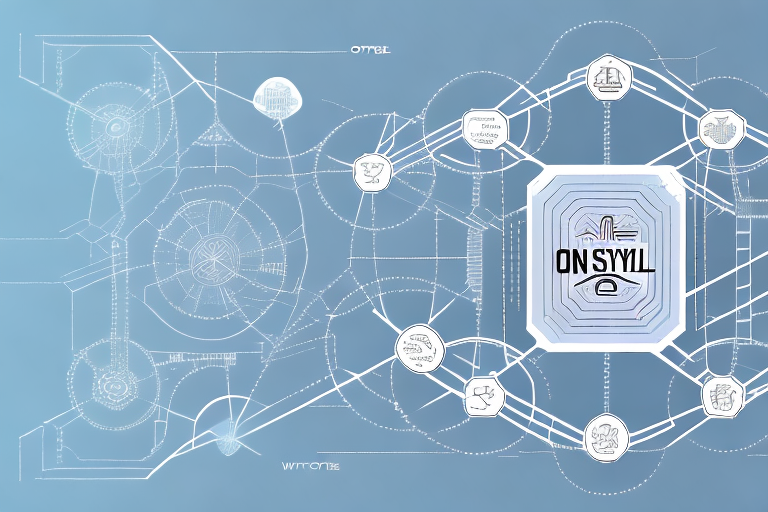
In the world of networking, the OSI (Open Systems Interconnection) model is the standard for understanding how data travels across a network. This model divides network communication into seven distinct layers, each of which serves a specific function. In this comprehensive guide, we'll delve into the details of the OSI model and explain how you can use it to better understand network architecture and become CompTIA certified.
Introduction to the OSI Model
At its most basic, the OSI model is a set of rules and guidelines that govern how data flows through a network. It was developed by the International Organization for Standardization in the 1980s as a way to standardize network communication across the world. The model is divided into seven separate layers, each of which performs a specific function in the data transmission process.
Understanding the Purpose of the OSI Model
The primary purpose of the OSI model is to ensure that data is transmitted accurately and efficiently across a network. By dividing the communication process into separate layers, the model enables developers and network engineers to troubleshoot specific problems without having to understand every aspect of the network. Additionally, the OSI model provides a standard for network communication that is used by manufacturers and developers around the world.
Overview of the Seven Layers in the OSI Model
The seven layers of the OSI model are as follows:
- Layer 1: Physical Layer of the OSI Model
- Layer 2: Data Link Layer of the OSI Model
- Layer 3: Network Layer of the OSI Model
- Layer 4: Transport Layer of the OSI Model
- Layer 5: Session Layer of the OSI Model
- Layer 6: Presentation Layer of the OSI Model
- Layer 7: Application Layer of the OSI Model
Each layer is responsible for specific functions, and data that travels through the network must pass through each of these layers in order to reach its destination.
Layer 1: Physical Layer of the OSI Model
The Physical Layer is the first layer of the OSI model and is responsible for controlling the physical aspects of data transmission. This layer defines the physical characteristics of the communication media, such as cables and wireless technology, and is responsible for encoding and decoding data into a format that can be transmitted across these media.
Layer 2: Data Link Layer of the OSI Model
The Data Link Layer is responsible for ensuring that data is transmitted efficiently and without errors. This layer is responsible for breaking down data into smaller frames that can be transmitted across the network and for checking those frames to ensure that they have been successfully received by the recipient.
Layer 3: Network Layer of the OSI Model
The Network Layer is responsible for routing data across the network. This layer uses IP addresses to identify the source and destination of data and determines the optimal path for the data to travel across the network.
Layer 4: Transport Layer of the OSI Model
The Transport Layer is responsible for managing data transfer between two devices. This layer ensures that data is transmitted reliably and error-free, and is responsible for breaking down data into smaller packets that can be transmitted across the network.
Layer 5: Session Layer of the OSI Model
The Session Layer is responsible for managing the communication between two devices. This layer establishes and manages sessions between applications and manages the flow of data between those applications.
Layer 6: Presentation Layer of the OSI Model
The Presentation Layer is responsible for transforming data into a format that can be understood by the receiving device. This layer translates data into a format that can be used by applications and ensures that data is correctly formatted for transmission across the network.
Layer 7: Application Layer of the OSI Model
The Application Layer is responsible for managing applications that use the network. This layer provides a platform for applications to communicate with each other and with the network, and provides a standard interface that applications can use to communicate with the network.
Importance of Understanding OSI Layers for CompTIA Certification
Understanding the OSI model is critical for anyone seeking CompTIA certification. The model provides a foundation for understanding network architecture and enables network engineers and developers to troubleshoot issues with specific layers of the network. By having a deep understanding of the OSI layers, you can demonstrate your expertise in network architecture and increase your chances of earning CompTIA certification.
Want to Learn More and Get CompTIA Certification?
Are you looking to take your IT career to new heights and increase your chances of landing exciting job opportunities worldwide? Look no further than TrainACE's comprehensive CompTIA training and certification program!
Our expert instructors have years of experience in the IT industry and will provide you with in-depth course content that covers all aspects of IT security. From network security to threat detection and prevention, our program has it all. You'll learn how to identify and mitigate various security risks, implement secure networks, and design effective security policies, among other crucial skills.
With a CompTIA certification, you'll stand out from the competition and prove your expertise in the field of IT security. Employers worldwide recognize the value of a CompTIA certification, and your job prospects will increase significantly once you become certified. You'll be able to pursue exciting career opportunities in various industries, including healthcare, finance, government, and more.
At TrainACE, we understand that our students have busy schedules, and that's why we offer flexible training options to fit your needs. You can choose to attend in-person classes, virtual instructor-led training, or self-paced online courses - whatever works best for you.
Don't let your career plateau. Join us today and take the first step towards becoming a CompTIA certified professional. Start your journey to career advancement and increased marketability with employers worldwide. Click here to learn more.
Leave Your Comment Here